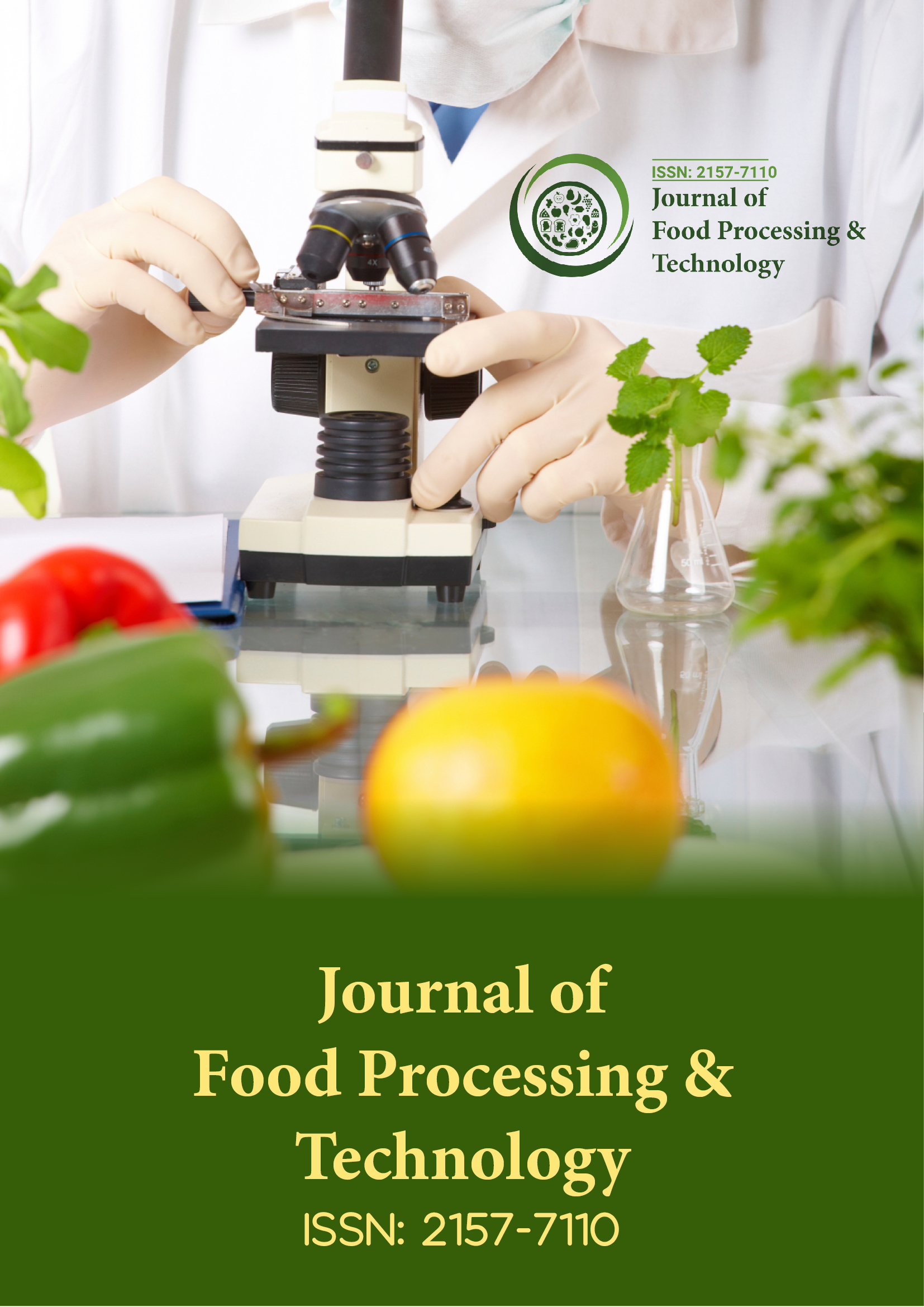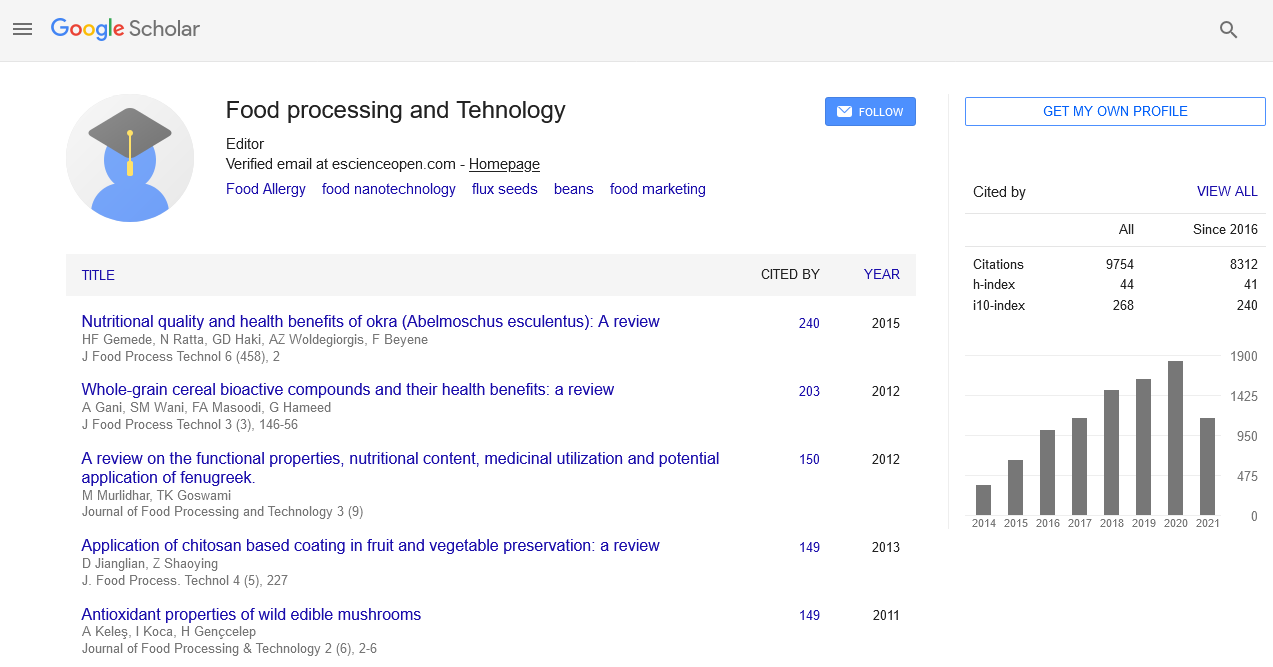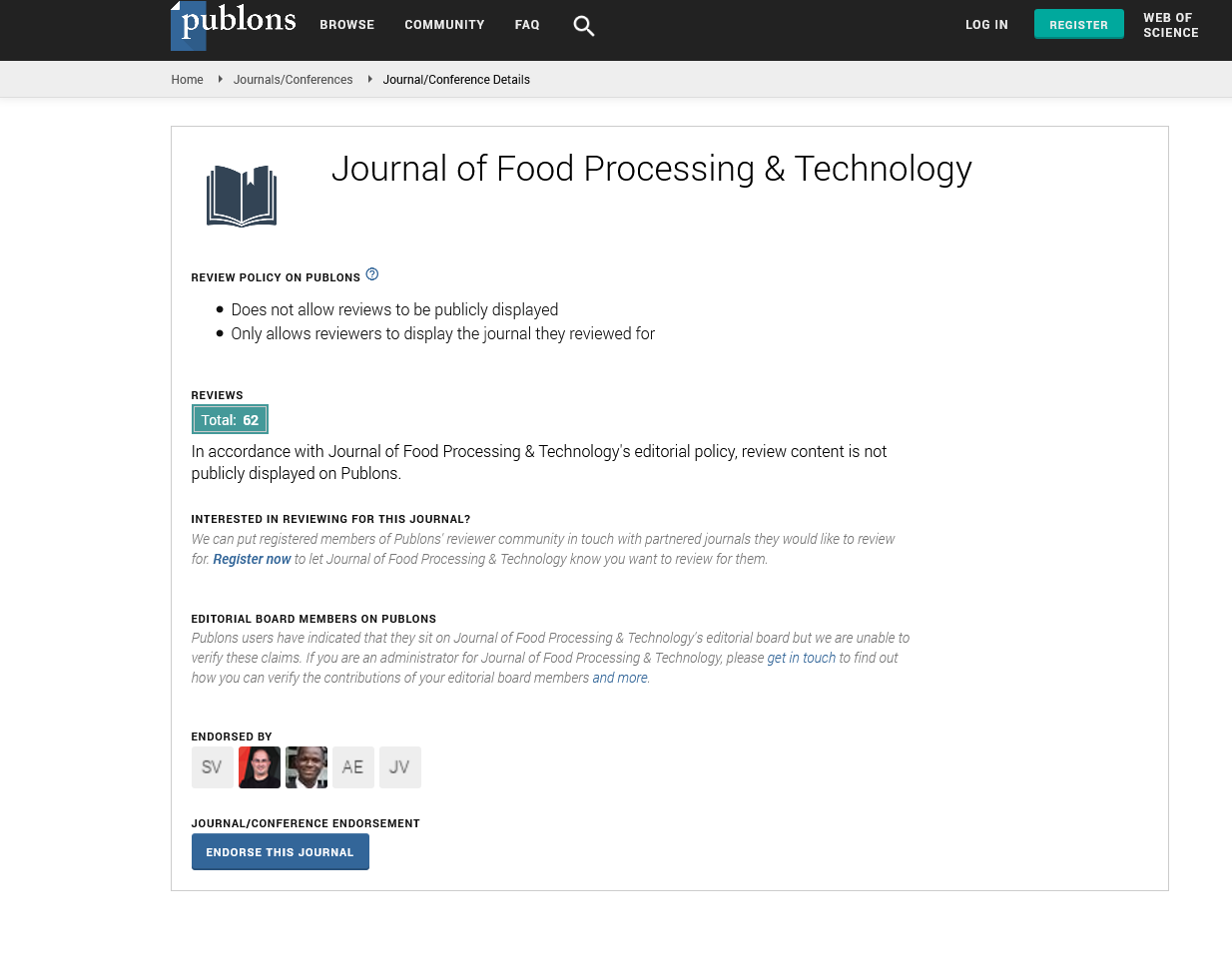Indexed In
- Genamics JournalSeek
- Academic Keys
- JournalTOCs
- China National Knowledge Infrastructure (CNKI)
- Access to Global Online Research in Agriculture (AGORA)
- Centre for Agriculture and Biosciences International (CABI)
- RefSeek
- Directory of Research Journal Indexing (DRJI)
- Hamdard University
- EBSCO A-Z
- OCLC- WorldCat
- Scholarsteer
- SWB online catalog
- Publons
- Euro Pub
- Google Scholar
Useful Links
Share This Page
Journal Flyer

Open Access Journals
- Agri and Aquaculture
- Biochemistry
- Bioinformatics & Systems Biology
- Business & Management
- Chemistry
- Clinical Sciences
- Engineering
- Food & Nutrition
- General Science
- Genetics & Molecular Biology
- Immunology & Microbiology
- Medical Sciences
- Neuroscience & Psychology
- Nursing & Health Care
- Pharmaceutical Sciences
Opinion Article - (2024) Volume 15, Issue 5
Advances in Food Production: Genetic Engineering and Biotechnology Applications
Ravi Eswar*Received: 30-Sep-2024, Manuscript No. JFPT-24-26895; Editor assigned: 03-Oct-2024, Pre QC No. JFPT-24-26895 (PQ); Reviewed: 17-Oct-2024, QC No. JFPT-24-26895; Revised: 24-Oct-2024, Manuscript No. JFPT-24-26895 (R); Published: 31-Oct-2024, DOI: 10.35248/2157-7110.24.15.1132
Description
The landscape of food production has undergone transformative changes over the past few decades, largely due to advances in genetic engineering and biotechnology. These innovations have revolutionized how we grow, process and consume food, offering solutions to global challenges such as food security, nutritional deficiencies and environmental sustainability. Genetic engineering, also known as genetic modification, involves altering the genetic makeup of organisms to achieve desired traits. In food production, this technology has been utilized to enhance crop yields, improve nutritional content and develop resistance to pests and diseases. One of the primary applications of genetic engineering in agriculture is the development of Genetically Modified (GM) crops that have enhanced characteristics.
For example, genetic modifications can improve the efficiency of photosynthesis and nutrient uptake, leading to higher crop yields. Bt cotton, engineered to produce a protein from the bacterium Bacillus Thuringiensis, is resistant to certain pests, reducing the need for chemical pesticides and increasing cotton yields. Crops can also be engineered to withstand environmental stresses such as drought, salinity and extreme temperatures. The development of drought-resistant varieties, such as genetically modified corn with enhanced drought tolerance, helps ensure stable food production in challenging climatic conditions.
Additionally, genetic engineering has enabled the creation of crops with built-in resistance to pests and diseases, reducing the need for chemical interventions and minimizing crop losses. Notable examples include Bt maize and Bt cotton, which produce proteins toxic to specific insect pests but safe for humans and animals, thus reducing reliance on chemical insecticides and contributing to more sustainable farming practices. Virus-resistant crops, such as genetically engineered papaya varieties resistant to the ringspot virus, have saved the Hawaiian papaya industry from collapse.
Genetic engineering can also enhance the quality of crops, including their taste, texture and shelf life. Techniques such as gene editing allow for precise modifications to improve these attributes without introducing foreign genes. For instance, genetic modifications can slow down the ripening process of fruits and vegetables, reducing spoilage and waste. The genetically modified Arctic apple has been engineered to resist browning, maintaining its appearance and freshness for a longer period. Improvements in flavor and texture can also be achieved by modifying specific genes involved in these traits, enhancing the overall sensory experience of food products.
Biotechnology encompasses a broad range of techniques and applications beyond genetic engineering. In food production, biotechnology is employed in various ways to enhance food quality, safety and sustainability. Fermentation is one of the oldest biotechnological processes used in food production and advances in biotechnology have refined these techniques, leading to improved production of foods and beverages. Modern biotechnology has enabled the development of probiotic strains with beneficial effects on gut health, used in products such as yogurt, kefir and fermented vegetables to promote digestive health and support the immune system.
Biofortification is another application of biotechnology, used to enhance the nutrient content of foods through fermentation processes. For example, certain yeast strains can be used to increase the vitamin D content in bread and other baked goods. Enzyme technology, which involves biological catalysts that facilitate biochemical reactions, is also significant in food production. In baking, enzymes such as amylases and proteases improve dough handling, bread texture and shelf life by breaking down starches and proteins. In cheese production, enzymes like rennet are essential for coagulating milk proteins and forming curds, with microbial rennet providing a vegetarian alternative to traditional animal-derived rennet.
Biopesticides and bioherbicides are biological alternatives to chemical pesticides and herbicides. Derived from natural organisms or substances, they are used to control pests and weeds in an environmentally friendly manner. Biopesticides include microorganisms such as Bacillus Thuringiensis (Bt) and fungi that target specific pests without harming beneficial insects or the environment and they are used in integrated pest management systems to reduce chemical pesticide use. Bioherbicides, derived from natural plant pathogens, target specific weed species; for example, certain fungi and bacteria are used to control invasive weed species, reducing the need for synthetic herbicides. Advances in genetic engineering and biotechnology have transformed food production, offering innovative solutions to global challenges related to food security, nutrition and sustainability. By enhancing crop yields, improving nutritional content, and developing sustainable practices, these technologies have the potential to revolutionize agriculture and food systems. It is essential to address the associated challenges and ensure that biotechnological innovations are used responsibly and ethically to benefit society.
Citation: Eswar R (2024). Advances in Food Production: Genetic Engineering and Biotechnology Applications. J Food Process Technol. 15:1132.
Copyright: © 2024 Eswar R. This is an open-access article distributed under the terms of the Creative Commons Attribution License, which permits unrestricted use, distribution, and reproduction in any medium, provided the original author and source are credited.


